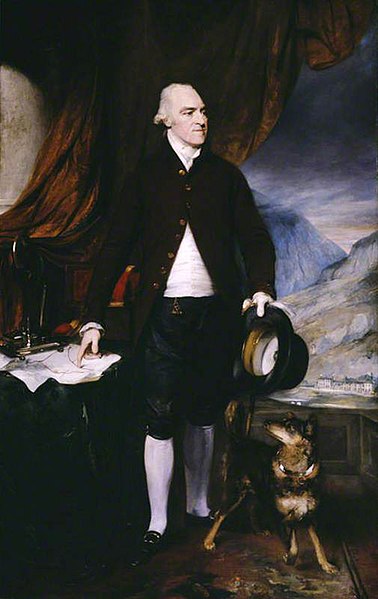Baron Penrhyn is a title that has been created twice. The first creation came in the Peerage of Ireland in 1783 in favour of Richard Pennant, who had previously served as a Member of Parliament for Petersfield and Liverpool. This creation became extinct on his death in 1808. The next creation came in 1866 in the Peerage of the United Kingdom when the Conservative politician Edward Douglas-Pennant was created Baron Penrhyn, of Llandegai in the County of Carnarvon. He had previously represented Carnarvon in the House of Commons and also served as Lord Lieutenant of Caernarvonshire. He was granted the estate of his father-in-law on the condition that he accepted his wife's maiden name, Pennant. Lord Penrhyn was the younger brother of The 17th Earl of Morton. In 1833 he had married Juliana Isabella Mary Pennant, eldest daughter and co-heiress of George Hay Dawkins-Pennant of Penrhyn Castle and in 1841 he assumed by Royal licence the additional surname of Pennant.

Edward Douglas-Pennant, 1st Baron Penrhyn, with a deputation of quarrymen from the Penrhyn Quarry
Richard Pennant, 1st Baron Penrhyn
Richard Pennant, 1st Baron Penrhyn, was a Welsh politician and nobleman who served as an member of parliament in the British Parliament, representing Petersfield and Liverpool from 1761 to 1790. He was the owner of Penrhyn Castle, an estate on the outskirts on Bangor, North Wales. Pennant was also an absentee owner of six sugar plantations and slaves in Jamaica. In Parliament, Pennant opposed the British abolitionist movement. In Wales, Pennant was a major figure in the development of the Welsh slate industry. He received an Irish peerage from George III in 1783, and died in 1808, leaving his estates to George Hay Dawkins.
A portrait of Richard Pennant by Henry Thomson
A portrait of Richard's wife, Anne Susanna Pennant, by Joshua Reynolds



